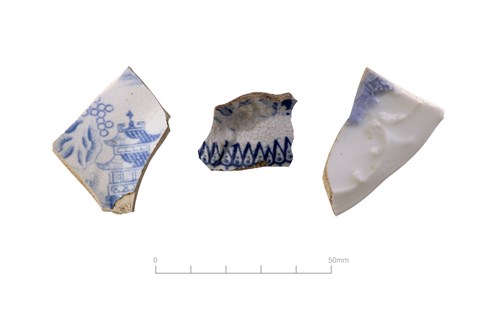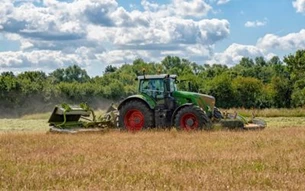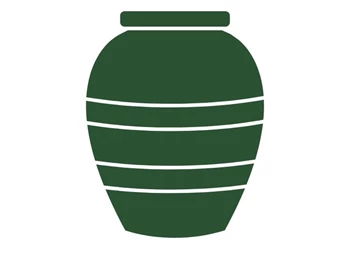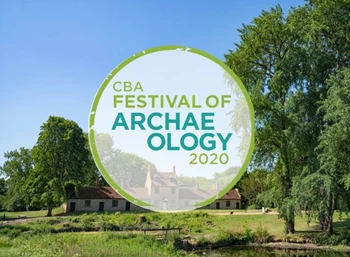Great Linford Archaeology
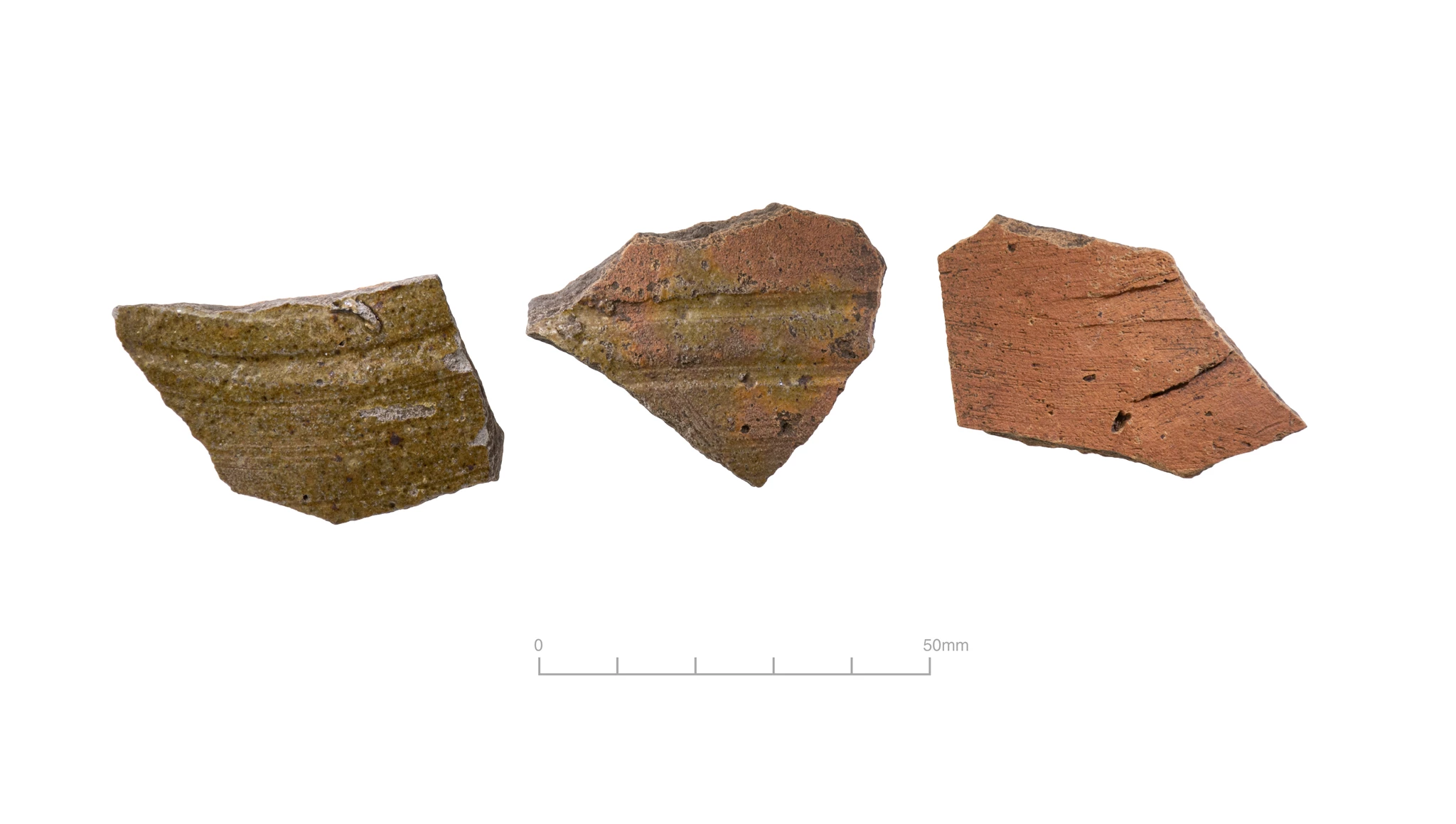
Archaeology is the study of what people leave behind, essentially, the study of rubbish! In 2017 and 2019 Cotswold Archaeology carried out excavations at Great Linford Manor Park as part of the ‘Reveal, Revive and Restore’ National Lottery Heritage Fund project. One element of the archaeological research was a community excavation where local people participated in the dig and learnt new skills in interpreting the past. Whilst many finds were discovered by the Cotswold team, many were also revealed by members of the public. Here we share a selection of the finds from the recent excavations – notice how not everything archaeologists find is ‘treasure!’. Photos © Cotswold Archaeology.
Clay pipe bowl, post-medieval (1550 onwards)
A very fragmented clay pipe bowl was found in the park. Because it’s so fragmented we don’t know exactly when it was from. However, this type of smoking device was first used in Britain in the 16th century after tobacco was imported from the Americas. The earliest pipes have smaller bowls reflecting the fact that tobacco was expensive when it was first brought over. Later pipes had larger bowls as tobacco dropped in price. The pipe is made from kaolin (china clay). The pipe form is made by rolling a ball of the clay into a long ‘sausage’, which will form the stem, with a bulb at one end. This is then put into a mould and a stopper is inserted to form the bowl shape. Pipes are then left to airdry before being fired in a kiln.
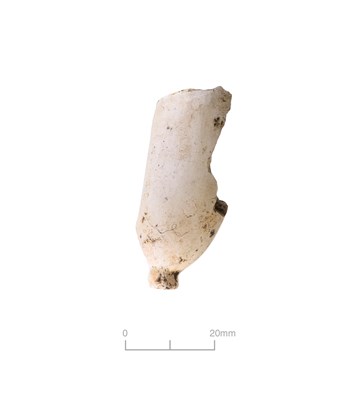
Iron fork, modern
Not everything found at the park was ancient, some objects were more recently discarded, such as this modern, four-pronged, iron fork. Although it’s very recognisable as one you might have in your cutlery drawer today, forks are a relatively new invention for humans. We have used knives for millennia as they are descendants of the hand axes used in the Palaeolithic (Stone Age) and spoons probably came from using convenient objects to scoop up a liquid; the Latin and Greek words for spoon are derived from a ‘snail shell’ whereas the Anglo-Saxon spon means chip. The fork shape has been familiar for thousands of years, for example as the shape of Poseidon’s trident, but wasn’t really used until the eleventh century in the Byzantine empire. Forks travelled to Italy from Byzantium and to France possibly by Catherine de Medici who married Henry II in 1533. Catherine had unorthodox feasting habits for the time so perhaps she brought the fork to the masses! 16th century forks were two-pronged, much like a modern carving fork. It wasn’t until the late 17th and 18th centuries that people began buying multiple cutlery sets for their homes and began using three and four-pronged forks. By the beginning of the 19th century, forks were firmly established on the table, albeit silver at first, and have been used ever since. Modern forks are made from stainless steel (iron + chromium) which was invented in 1913.
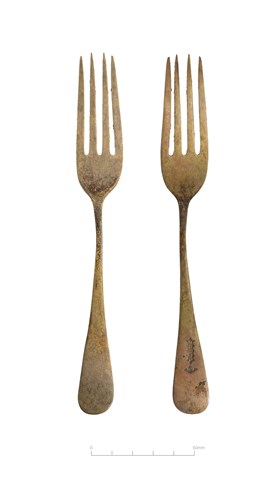
Iron tent peg, modern
Have you ever left a campsite having been unable to retrieve all your tent pegs? It seems this is a decades-old problem! A modern iron tent peg was found in the park, heavily corroded from being buried in the ground for many years. Armies on the move have used tent pegs for centuries, with some examples from the Roman period in Germany (2nd/3rd centuries). Modern tent pegs tend to be made from aluminium.
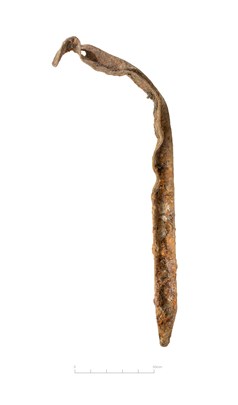
Medieval pot sherds, c.1050-1400
Lots of medieval pottery was found in the park, such as these two sherds of Developed St. Neots and Lyveden-Stanion Ware. Pottery in the Medieval period was like plastic today, very common and used for basically everything! St. Neots ware is usually wheel-thrown, but some examples are hand-formed. It was probably produced in various centres around St. Neots. Lyveden-Stanion ware is later in date than St. Neots, coming from around 1100-1400. It was produced at numerous kilns in the villages of Lyveden and Stanion in north-east Northants.
Some of the sherds discovered are of a type called ‘Olney ware’. In 1957 a medieval pottery production site was identified at Olney. At the site, medieval people were producing two types of pottery fabric, one with limestone in the clay and one with sand.
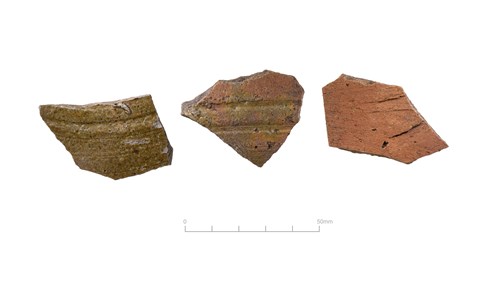
Above - Olney ware
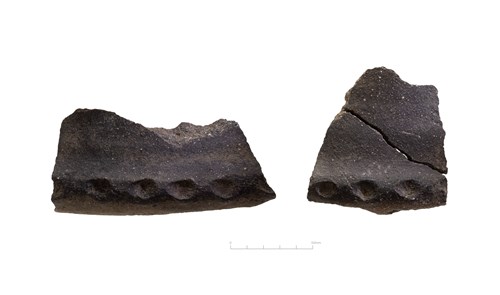
Above - St. Neots and Lyveden-Stanion ware
Plastic comb, modern
We hear all the time nowadays about plastics polluting our oceans, but archaeology has shown that they’re also polluting our land. This blue plastic comb is a very recent addition to the archaeological record, and is probably from the 1950s-80s. Combs have been used for centuries as a way to groom and style hair, both of humans and animals, in fact the earliest combs have been dated to the Stone Age from 10000-15000BC! Early combs were made from natural materials: ebony, tortoiseshell and ivory for example, but in 1930s the invention of plastic revolutionised mass production of objects like combs. Plastic combs like this would take over 400 years to decompose, so archaeologists would still be finding them in 2420!

Fragments of porcelain, 18th-20th century
Porcelain is a ceramic material which is made by gently heating clay to a temperature of between 1200-1400◦C. The technique developed in China and became the porcelain we know today between 2000 and 1200 years ago. Over time porcelain spread around the world. Its manufacturing process is more demanding than for other types of pottery, for example earthenware or stoneware, which makes for strong, delicate pottery with a white colour. Nowadays porcelain is quite common but originally it was a luxury item. Despite this, it's pretty common in the archaeological record reflecting its eventually widespread use.
